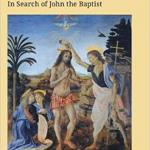Anyone who has ever worked on the Fourth Gospel and/or the scholarship of Rudolf Bultmann will have heard of the Mandaeans, at least in passing. They are a group who became known as “St. John Christians”, but this is a misnomer since they are not Christians and view John the Baptist positively but not Jesus. While there is still some uncertainty about whether they could possible be a genuine offshoot of John the Baptist’s movement, since all their extant writings are from much later, what should not be forgotten is that (1) they are a group that still exists today, and (2) being predominantly in Iraq, they are inevitably affected by the current situation there. I thus wish to thank April DeConick for posting on this topic on her blog, complete with a link to a video clip on the subject.
Did you know the Samaritans are still around too? They are, and I try to make sure my students are aware of it. Not only the various forms of Judaism and Christianity they are familiar with (and many of them have a limited experience even of those) are what remains from the various groups mentioned and hinted at in the New Testament.
I am still impressed after having had a chance to spend time with the Thomas Christians or ‘Mar Thomites‘ of Kerala in South India about a year ago, on my first visit to India. Not only are they a group that claims to have been founded by St. Thomas (a claim, interestingly enough, that the Pope was accused of implicitly denying – just to connect this to the topic of my previous two posts), they are also the only Reformed Orthodox denomination in the world.
What better way to teach students about the diversity in ancient Judaism and Christianity than by drawing attention to the remnants of that diversity that still exist today – and which, thanks to their web presence, can be incorporated into a course through pictures in powerpoint and so on (the Samaritan Passover being celebrated on Mt. Gerezim is particularly worth showing).












